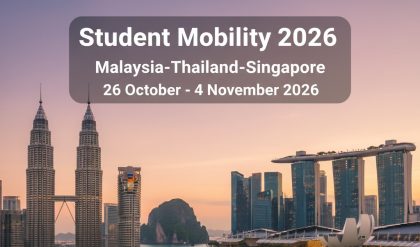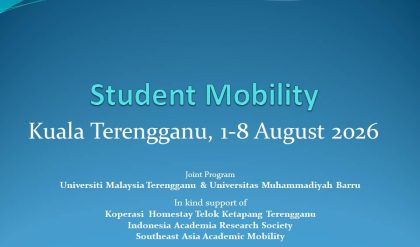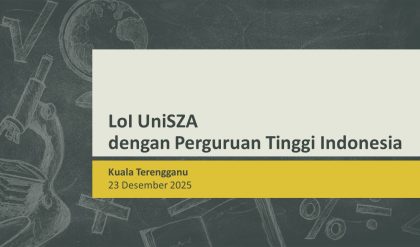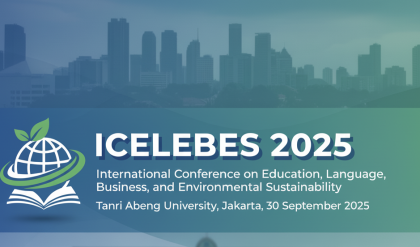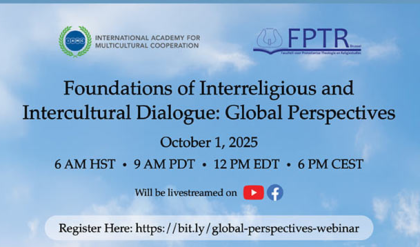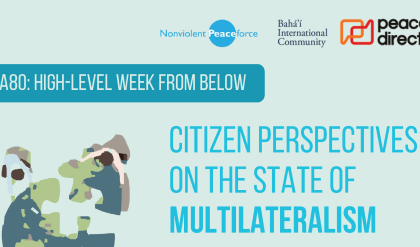Unmuhbarru.ac.id, Barru – The ISHE 2025 will be in Kuala Lumpur – Melaka, 4-5 September 2025, following the past conferences (2024) in Sendai-Tokyo; (2023) Makassar-Bulukumba. It is the initiative collaboration between STIKES Panrita Husada Bulukumba and Universitas Muhammadiyah Barru, both higher education institution in Indonesia. The 2025 edition with a kind support of Universiti Teknikal Malaysia Melaka.
The phrase “The Interdisciplinary Innovation: Expanding Entrepreneurial Ecosystems and Technology Management for Global Health and Environmental Resilience” describes an initiative framework for addressing some of the world’s most pressing challenges. At its core, it emphasizes interdisciplinary innovation, meaning it calls for a departure from isolated problem-solving within single fields like medicine or environmental science. Instead, it promotes the blending of knowledge from diverse areas—such as engineering, business, public policy, and sociology—to create holistic, and more effective, solutions. This approach recognizes that complex issues like climate change and pandemics cannot be solved with a single discipline and requires a comprehensive understanding of their technical, social, and economic dimensions.
A key component of this framework is the expansion of entrepreneurial ecosystems. This means fostering environments where new ventures and start-ups can thrive, particularly those focused on global health and environmental solutions. It involves creating networks of support that include access to venture capital, business incubators, accelerators, and mentorship from experienced entrepreneurs. By building these ecosystems, the framework aims to channel the creative energy and risk-taking nature of entrepreneurs into tackling problems that traditional institutions might be slower to address. These ecosystems act as catalysts, helping to turn promising ideas from labs and research centers into viable, scalable companies.
The role of technology management is also central to this concept. It’s not enough to simply invent new technologies; they must be strategically managed and deployed to have a real-world impact. This involves the entire lifecycle of a technology, from initial research and development to commercialization and market adoption. For example, managing the supply chain for a new vaccine or ensuring the equitable distribution of a low-cost water purification system requires careful planning and expertise. The framework emphasizes that for technology to contribute to global health and environmental resilience, its development must be guided by a deep understanding of market needs, regulatory landscapes, and the socio-cultural context in which it will be used.
Ultimately, the goal is to enhance global health and environmental resilience. This means building systems that can withstand and recover from shocks like pandemics, natural disasters, and the effects of climate change. For global health, this could involve creating better disease surveillance systems or developing faster, cheaper diagnostic tools. For environmental resilience, it could mean innovating new forms of renewable energy, building sustainable agriculture practices, or developing technologies for waste management. The framework proposes that by integrating innovation, entrepreneurship, and technology, societies can move beyond simple mitigation efforts and build truly robust and adaptable systems.
In summary, this interdisciplinary approach provides a comprehensive model for tackling complex, interconnected problems. It bridges the gap between scientific discovery and market-driven solutions by creating a fertile ground for collaboration between different sectors. By consciously nurturing entrepreneurial ecosystems and applying sound technology management principles, the framework creates a powerful engine for positive change. It represents a shift from reactive problem-solving to a proactive and systemic strategy, ensuring that the innovations of today are effectively translated into the resilient health and environmental systems of tomorrow.
